
What Happens after Manuscript Submission?
Blog, Plantae Webinars, Pubs Pages, Science Communication, Webinars0 Comments
/
What Happens after Manuscript Submission?
Recorded Friday, March 6, 2020
About This Webinar
In one of our recent webinars, Mary Williams discussed how to prepare your manuscript for publication. But what happens next?
In the second webinar of this series, Jon Munn, Jennifer Regala,…

Review: How mycorrhizal associations drive plant population and community biology ($) (Science)
Plant Science Research WeeklyGreat strides have been made in discovering the molecular players that allow plants and mycorrhizal fungi to establish their symbiosis. Here, Tedersoo et al. look beyond the single plant and address how these associations affect plant communities. Notably, they review the functions of the four evolutionarily…

Review: Mechanisms regulating PIF transcription factor activity at the protein level ($) (Physiol. Plant.)
Plant Science Research WeeklyAbsorption of red and far-red light by phytochromes dramatically affects plant development, and many of these effects are mediated by the PIF (PHYTOCHROME INTERACTING FACTOR) family of transcription factors. Favero reviews the many ways that PIF activity is regulated beyond through their interactions…
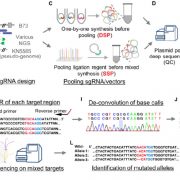
High-throughput CRISPR/Cas9 mutagenesis streamlines trait gene identification in maize (Plant Cell)
Plant Science Research WeeklyMaize has provided some fascinating mutants and developmental insights, but its genomic complexity has made it more difficult (for example as compared to rice) to identify agronomically important genes. Liu et al. describe a new high-throughput method to integrate forward- and reverse-genetics to identify…
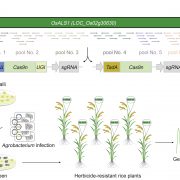
Base-editing-mediated artificial evolution of OsALS1 in planta to develop novel herbicide-tolerant rice germplasms (Mol. Plant)
Plant Science Research WeeklyThe trait of herbicide tolerance allows farmers to use chemical means to eliminate weed competitors. Acetolactate synthase (ALS) is an enzyme targeted by more than 50 different herbicides. In order to generate novel herbicide tolerance traits, Kuang et al. used a base-editing artificial evolution approach,…
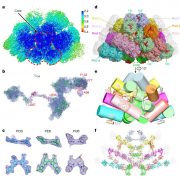
Structural basis of unidirectional energy transfer in Porphyridium purpureum phycobilisome (Nature)
Plant Science Research WeeklyCyanobacteria and red algae employ phycobilisomes (PBSs) as light-harvesting systems to adapt to fluctuating environments. PBSs are composed of phycobiliproteins, linker proteins and chromophores. Ma et al. used cryo-EM to determine the 2.82 Å structure of the very large (14.7-megadalton, 706 protein…
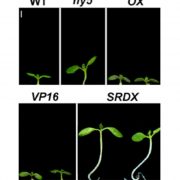
Chimeric activators and repressors define HY5 activity and reveal a light-regulated feedback mechanism (Plant Cell)
Plant Science Research WeeklyPlants take cues from the environment and decide when and how to regulate growth. When light is limiting, etiolated growth allows plants to reach the soil surface and gain access to light. After light perception, plants de-etiolate and go through a series of morphological and genetic changes. HY5 is…

Two MYB proteins in a self-organizing activator-inhibitor system produce spotted pigmentation patterns (Curr. Biol.)
Plant Science Research WeeklyThe questions of how patterns are formed is one of the oldest in biology, and even considered by the famous mathematician Alan Turing, who proposed that reaction-diffusion (RD) models underly de novo pattern formation. Briefly, a reaction that takes place in one place sends a signal that leads to a different…
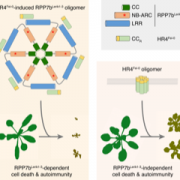
Hybrid autoimmunity and a plant resistosome complex ($) (Cell Host Microbe)
Plant Science Research WeeklyHybrid necrosis occurs when the progeny of a cross between two different plants show widespread cell death. It can be caused by autoactivation of nucleotide-binding and leucine rich repeat domain (NLR) proteins, intracellular immune receptors that play a central role in plant resistance to diverse pathogens.…

